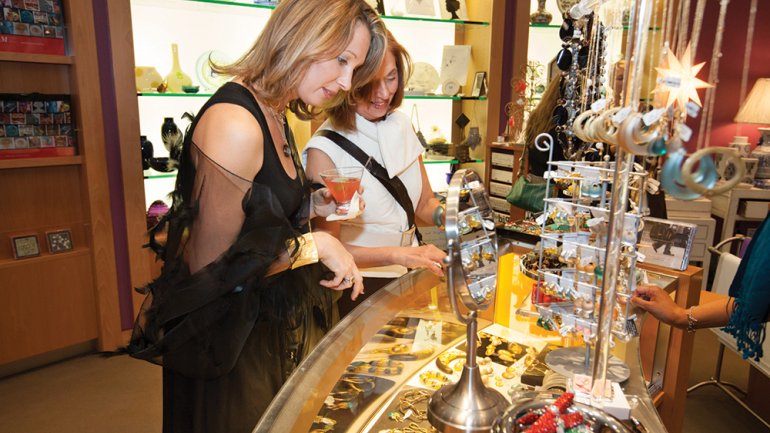From Shows to Shop
From Shows to Shop
Peabody Essex Museum
Museum Shop
East India Square
161 Essex Street
Salem, MA 01970
978-542-1619
The Peabody Essex Museum in Salem, Massachusetts, stands out among museums. It traces its beginnings to 1799. It has developed a novel business model, as a recent Wall Street Journal article described, beefing up its endowment so it is less dependent on annual fund-raising. And while it’s an art museum, craft objects are seamlessly integrated into its collections. “We view craft as a subset of art,” director of merchandising Lynne Francis-Lunn says.
So perhaps it’s to be expected that the museum shop is also remarkable, particularly for its unique and ever-changing inventory, which directly re-lates to exhibitions staged in the museum. We spoke with Francis-Lunn about how the shop fits into the museum’s overall mission.
Museum shops play different roles. Some are a change of pace within a museum; others are an extension of the mission. Describe the vision behind the shop at the Peabody Essex.
The retail store at the Peabody Essex Museum links closely with the museum’s exhibitions. The mix of merchandise is intended to increase visitors’ knowledge of art, stimulate their minds, invigorate their senses, and reflect the museum and its exhibitions.
Can you give an example of products that reflect the museum’s exhibitions?
During a recent exhibition, “Hats: An Anthology by Stephen Jones” (which originated at the Victoria and Albert Museum in London), a decision was made to sell not only books on hats but also hats, building on the excitement generated by the show. There were stations in the exhibition where visitors could try on hats virtually and touch materials; it was dynamic, visually stunning, and engaging. It appeared to present a perfect retail opportunity: Who doesn’t like to play dress-up?
The store staff searched for quality milliners and hat companies that could provide products for the store. (The former create elegant, experimental, and often whimsical hats, while the latter focus on large-scale production of standard hat types.) Staff attended trade shows, visited artists’ studios, and surfed the web, selecting hats from seven milliners and a dozen companies. Training sessions helped staff learn to wear and style hats, and a handout was created for customers on hat etiquette.
Then the museum shop held four trunk shows, with milliners from Massachusetts, Kentucky, and Tennessee. In conjunction with the museum’s education department, the store produced a fashion show with Stephen Jones, international milliner to royalty and celebrities. The event was a phenomenal success. The result? During the run of the exhibition, the museum shop sold more than 3,500 hats.
Store staff never expected to sell that number of hats; originally, we had purchased 300. By the end of the exhibition, we had overwhelmed every milliner and vendor with whom they worked, as the hats were all handmade. Store staff created excitement around hats, and it worked; we sold hats!
How and when did you arrive at your approach, tying store merchandise so closely to exhibitions?
Key to the success of the store is the dynamic merchandising mix and the fact that it changes all the time, based on the museum’s exhibition schedule. The museum shop has been exhibition-driven in its product mix for about 10 years. Museum shop staff research the marketplace looking for appropriate merchandise, as well as meet with curators and museum educators to understand upcoming exhibitions and programming.
How do you gauge the success of the shop, and what do you hope visitors take away – besides, perhaps, a memento or two?
The Peabody Essex Museum Shop wins awards. The most notable award came in 2009, when Boston Magazine named the store Best Gift Shop north of Boston. We want our customers to have a positive experience. We want to exceed their expectations. We want them to come back again and bring their family and friends.
Monica Moses is editor in chief of American Craft.




